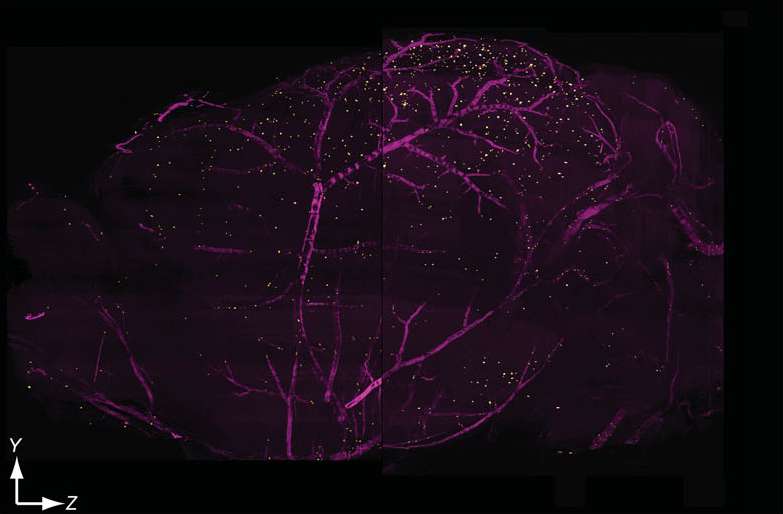Breakthrough research reveals a new target for Alzheimer's disease treatment

A research team led by Amantha Thathiah (VIB/KU Leuven) has determined that a protein - known as GPR3 - might play an important role in alleviating the cognitive deficits and reducing the generation of 'amyloid plaques'. These abnormal clusters of protein fragments build up between nerve cells and disrupt communication in the brain, which makes them prime suspects for causing Alzheimer's Disease (AD). The results were announced in the leading journal Science Translational Medicine. The identification of GPR3 as an AD therapeutic target provides an important new perspective in AD drug development.
Alzheimer's Disease (AD) is the most common type of dementia. It is characterised by a gradual degeneration of the brain networks that are involved in memory and cognition.
Explaining amyloid plaques
A pathological hallmark of AD is the accumulation of protein fragments between nerve cells in the brain. These protein fragments are created by secretases, enzymes that cleave proteins into smaller pieces. One of the fragments that is produced following cleavage by the γ-secretase is the amyloid-β peptide, which aggregates to form amyloid plaques. The accumulation of amyloid plaques in the brains of Alzheimer's disease patients leads to the gradual degeneration of brain networks and disruption of mental function.
A closer look at GPR3
Amantha Thathiah (VIB/KU Leuven): "We discovered that G protein-coupled receptor 3 (GPR3), a protein expressed in the brain, plays a significant role in the generation of amyloid-? peptides and accumulation of amyloid plaques. Our research indicates that the absence of GPR3 alleviates the cognitive decline and reduces amyloid pathology in multiple disease-relevant models. These studies identify GPR3 as a therapeutic target for AD and provide a significant level of validation necessary for the future of AD drug discovery."
Mouse models and the human brain
AD mouse models are important tools to study AD progression. However, no mouse model fully captures the pathological changes in AD patients. Consequently, validation of AD therapeutic targets in multiple models is required prior to advancing to clinical research.
Amantha Thathiah (VIB/KU Leuven): "Although the loss of GPR3 reduced amyloid burden and improved cognition in four AD mouse models, we also evaluated the GPR3 expression in post-mortem brain tissue from two cohorts of AD patients. These studies revealed that GPR3 expression is elevated in a subset of AD patients and is associated with disease progression."
Opening the doors of clinical research
These studies provide a significant preclinical validation for GPR3 and set the bar for therapeutic validation in the development of AD drug targets. G protein-coupled receptors (GPCRs) already play a fundamental role in the regulation of various physiological and pathological processes. Over 50% of marketed drugs target GPCRs.
Bart de Strooper (VIB/KU Leuven): "Given the vast resources required to develop and evaluate a new therapy, demonstrating the relevance of research findings in multiple disease-relevant models is crucial. Our research provides exactly this level of validation."
More information: "Loss of GPR3 reduces amyloid plaque burden and improves memory in Alzheimer's disease mouse models," by Y. Huang et al. stm.sciencemag.org/lookup/doi/ … scitranslmed.aab3492



















